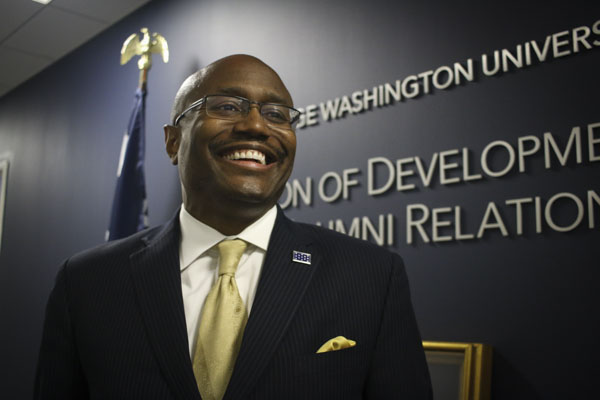Officials expect to hit their goal of raising $1 billion on time.
The $1 billion campaign, which formally launched two years ago, has raised $852 million so far and is still set to finish at the end of June 2018. Gifts to individual schools make up the largest part of the campaign’s goals, but officials will not comment on fundraising progress within each school.
In total, gifts to 13 schools and the Mount Vernon Legacy are expected to total $824 million, according to GW’s campaign website. The School of Medicine and Health Sciences holds the largest goal of $225 million, followed by the Milken Institute School of Public Health’s planned $150 million total – more than half of which is covered by a record $85 million gift made in 2014.
Aristide Collins, the vice president of development and alumni relations, declined to disclose the fundraising progress within each school.
“We continue to work with the deans, development and alumni relations staff in the schools and units to engage with alumni, friends and potential donors,” Collins said in an email.
Collins added that development staff are “placing fundraising emphasis on unmet needs” for faculty and student support.
Each school’s page on the fundraising website lists which smaller projects will benefit from the funds raised.
According to a chart on the campaign website, 94 percent of donations made to the campaign so far are designated for specific causes. Fifty-nine percent of those funds raised went toward academic programs, 19 percent toward expanding the University’s research programs and 16 toward support students through scholarships and academic advising. The remainder are labeled as “unrestricted.”
“Unrestricted gifts include both the university’s general fund, which helps advance priorities identified through GW’s strategic plan and addresses the university’s greatest needs, as well as dean’s funds, which are used at the dean’s discretion for school-specific needs,” University spokeswoman Maralee Csellar said in an email.
Experts said that fundraising officials are often cautious in releasing information about smaller goals within the campaign.
Rob Townes, the executive vice president of Atlanta-based fundraising firm Sinclair, Townes & Company, said while schools will announce good news as the campaign progresses, they often hesitate to publicize slow progress because those announcements could derail larger gifts in the works.
“A big gift may be gestating,” Townes said. “If it got out that a certain school isn’t doing a very good job, it could undermine the conversation that’s going on to get that gift in.”
Townes said that publicizing the smaller goals could put the University in a bad position if they fall slightly short, even if they have raised a significant amount of money.
“You never ever ever want to have a goal that you don’t make,” Townes said. “It may be that a school has a $100 million goal, and you raise $99 million. Some people may too easily cast that as a failure.”
Jancy Houck, the director of development at the University of South Carolina, said that during her university’s $1 billion campaign, which wrapped up last year, some individual schools did not meet their fundraising goals.
Houck said that when her team realized some schools could not reach the individual goals, development officers shifted the marketing approach to focus on the campaign’s overall success.
“We don’t want anyone to feel bad about it,” Houck said.
Houck said managing a campaign that is divided by school can be difficult, especially for the development officers in each school who have to coordinate with each other. She said that if a potential donor has connections to multiple units within a university, fundraisers have to be wary of overwhelming them with requests for gifts.
“If it became obvious to the donor that different schools were fighting over him, that would be a big deterrent,” Houck said.







